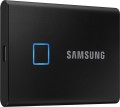Memory type
The type of the main memory of the drive determines the features of the distribution of information over hardware cells and the physical features of the cells themselves.
—
MLC. Multi Level Cell memory based on multi-level cells, each of which contains several signal levels. MLC memory cells store 2 bits of information. Has optimum indicators of reliability, power consumption and productivity. Until recently, the technology was popular in entry-level and mid-range SSD modules, now it is gradually being replaced by more advanced options in the manner of TLC or 3D MLC.
—
TLC. The evolution of MLC technology. One Flash Memory Triple Level Cell can store 3 bits of information. Such a recording density somewhat increases the likelihood of errors compared to MLC, in addition, TLC memory is considered less durable. A positive feature of the nature of this technology is its affordable cost, and various design tricks can be used to improve reliability in SSDs with TLC memory.
—
3D NAND. In a 3D NAND structure, several layers of memory cells are arranged vertically, and interconnections are organized between them. This provides greater storage capacity without increasing the physical size of the drive and improves memory performance due to shorter connections for each memory cell. In SSD drives, 3D NAND memory can use MLC, TLC or QLC chips - more details
...about them are described in the corresponding help paragraphs.
— 3D MLC NAND. MLC-memory has a multilayer structure — its cells are placed on the board not in one level, but in several "floors". As a result, manufacturers have achieved an increase in storage capacity without a noticeable increase in size. Also, 3D MLC NAND memory is characterized by higher reliability than the original MLC (see the relevant paragraph), at a lower manufacturing cost.
— 3D TLC NAND. "Three-dimensional" modification of the TLC technology (see the relevant paragraph) with the placement of memory cells on the board in several layers. This arrangement allows you to achieve higher capacity with smaller sizes of the drives themselves. In production, such memory is simpler and cheaper than a single-layer one.
— 3D QLC NAND. Quad Level Cell flash type with 4 bits of data in each cell. The technology is designed to make SSDs with large volumes widely available and finally retire traditional HDDs. In the 3D QLC NAND configuration, the memory is built according to a “multi-level” scheme with the placement of cells on the board in several layers. "Three-dimensional" structure reduces the cost of production of memory modules and allows you to increase the volume of drives without compromising their weight and size component.
— 3D XPoint. A fundamentally new type of memory, radically different from traditional NAND. In such drives, memory cells and selectors are located at the intersections of perpendicular rows of conductive tracks. The mechanism for recording information in cells is based on changing the resistance of the material without the use of transistors. 3D XPoint memory is simple and inexpensive to produce, and offers much better speed and durability. The prefix "3D" in the name of the technology says that the cells on the crystal are placed in several layers. The first generation of 3D XPoint received a two-layer structure and was made using a 20-nanometer process technology.Cable included
The type of cable that comes with the drive.
This parameter is relevant only for external models (see "Type"). The type of cable is indicated by the types of connectors at its ends, with the plug for connecting to the drive being the first, and the plug for connecting to the computer being the second. Specific types of connectors can be as follows:
— USB A. Plug for traditional full-size USB ports — such as those provided in most computers and laptops. Actually, such a plug is used only at the “computer” end of the cable — USB A connectors are too bulky for the drives themselves.
— USB-C. The newest of modern USB connectors. Unlike its predecessors, it has a two-sided design — the plug can be inserted into the connector by either side. Very compact, making it suitable for installation in the drive case; however, it is also found in computers/laptops, so USB-C plugs can be provided on one or both sides of the cable.
— Micro B. Plug under the microUSB connector; such a connector is familiar to many from portable gadgets like smartphones and tablets, it is also found in SSD drives. Actually, the micro B plug is provided only on the side of the drive — this connector is practically never found in computers.
— MiniUSB. Another smaller version of the USB plug, in many ways similar to the micro B described above. Nowadays it is considered obsolete and has practically fallen into disuse.
The most common bundled c
...able options are USB-C — USB A, USB-C — USB-C, micro B — USB A and mini USB — USB A. Some drives that have a USB-C connector are equipped with two types of wire at once — with USB-C and USB A at the "computer" end.Shockproof
The presence in the drive of enhanced protection against shocks and concussions.
SSD modules themselves are pretty shock-resistant; the same feature is indicated if the drive is specially reinforced in order to withstand falls and other “troubles” as much as possible.
The impact-resistant housing is relevant primarily for outdoor models (see "Type").

